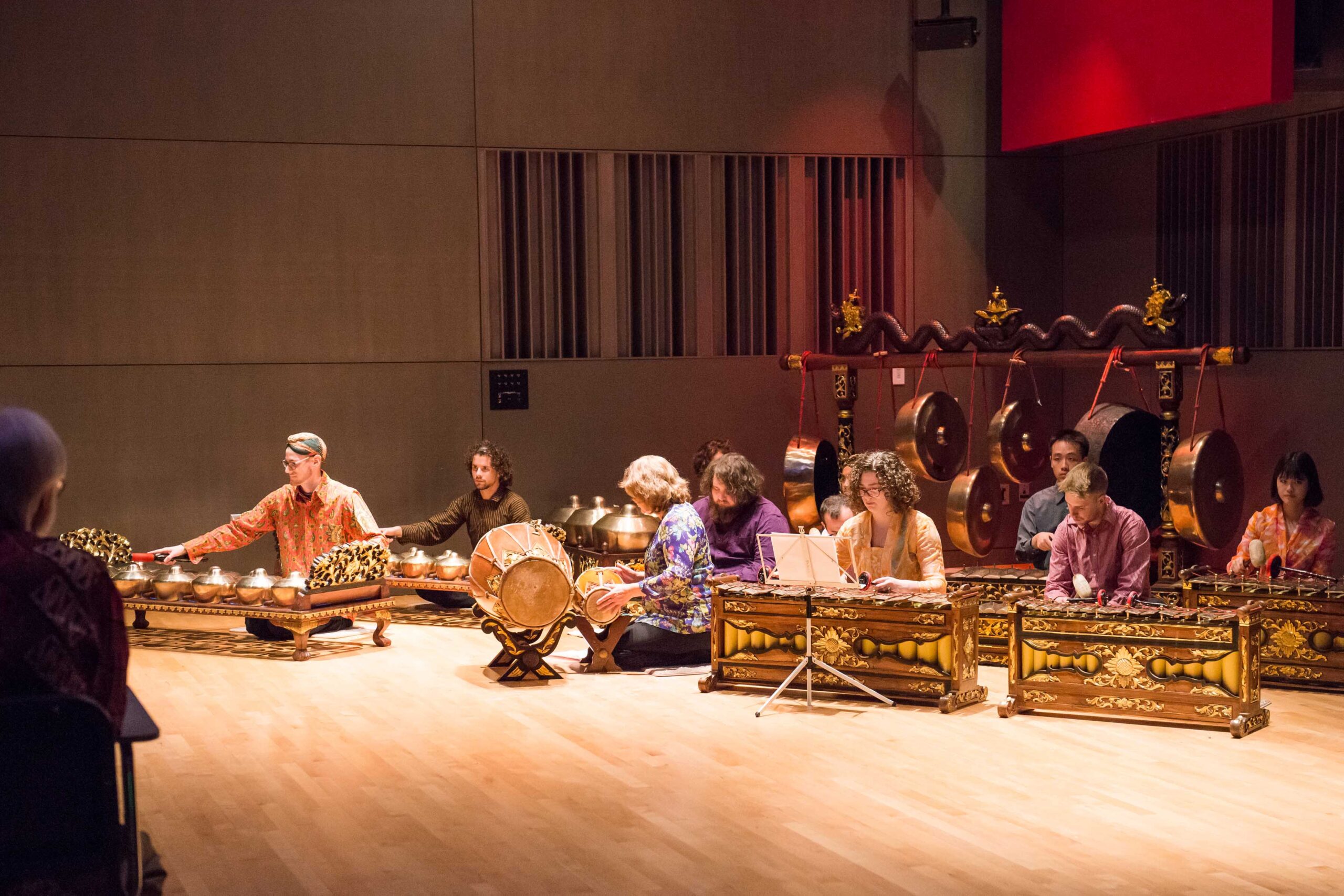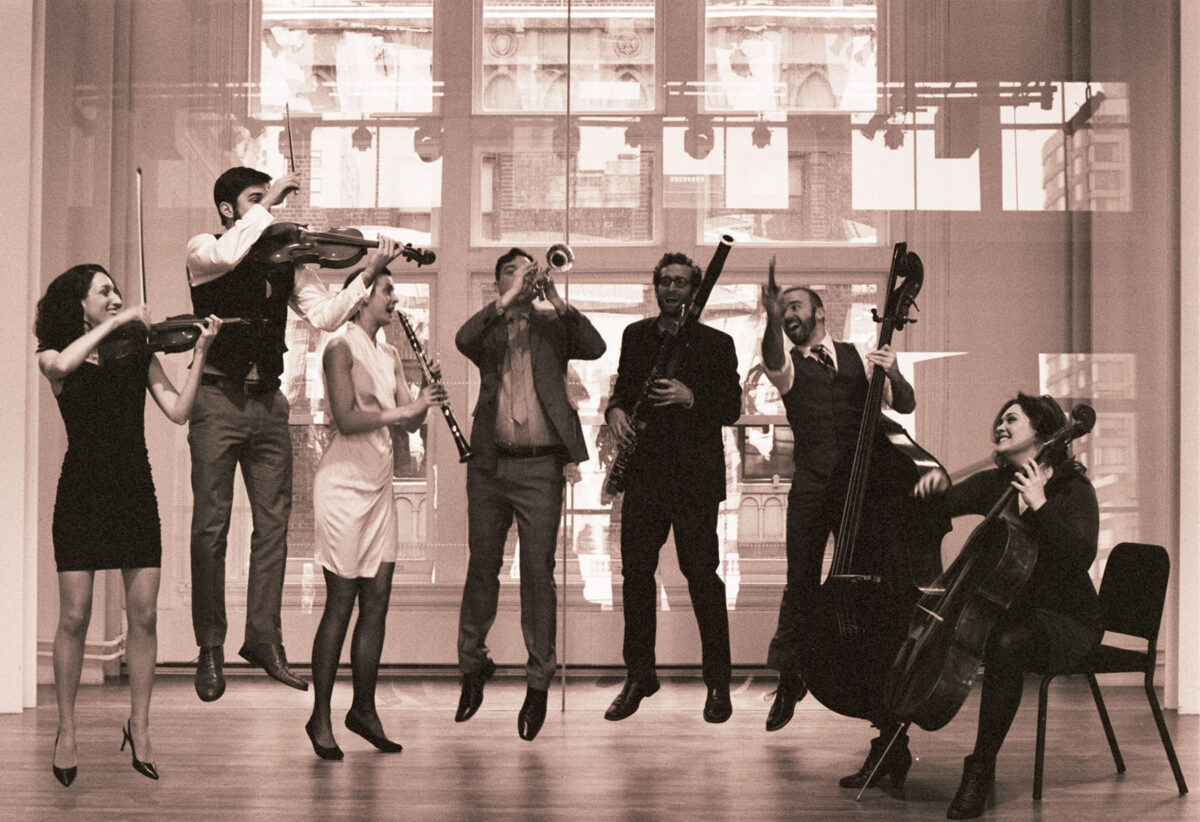 In the corner of the Music Box theater, a spacious room on the first floor of the Performing Arts and Humanities Building, lives a curious collection of gold-colored instruments. Organized in an ensemble on the floor, all of the pieces make up the gamelan, one of the most unique musical instruments on campus.
In the corner of the Music Box theater, a spacious room on the first floor of the Performing Arts and Humanities Building, lives a curious collection of gold-colored instruments. Organized in an ensemble on the floor, all of the pieces make up the gamelan, one of the most unique musical instruments on campus.
“Take your shoes off and find a spot to jump right in,” says instructor Gina Beck, M.A. ’90, ethnomusicology, as she invites her students to sit on floor mats behind each individual piece of the Indonesian instrument. They file in toward the gamelan and choose their places. Some sit behind the bronze bars of the sarons in the front and second row; some choose mats behind the shiny kettle-like bonang instruments to the left; and a couple go for the gongs in the back.
Once the students are settled, the professor counts off a song and they begin to play. The music evokes a kind of ringing sound like an ensemble of bells, but more delicate on the ear. Beck observes the gamelan “has a sound that can come forth dramatically as well as so delicately that it is floating on air.”
A Sound “Like Floating on Air”
Each piece of the ensemble contributes to the gamelan’s warm, relaxing sound made up of melodic tunes, musical flourishes, and percussion all working together. Most of the instruments are made out of bronze casing and keys that the player taps with a tabuh (a padded hammer). UMBC’s ensemble also includes hand drums and stringed instruments.
Tyler Whittenburg ’20, Asian studies, says, “there’s different instruments with different levels of skill required to play, so the sarons in the middle are what everybody starts off playing.” The sarons provide the melody for the whole ensemble and are traditionally made up of seven numbered bronze metal keys encased on a decorative wooden frame. In order to play, one taps the numbered keys with a tabuh and follows the melody’s numbered pattern. Rather than relying on sheet music, players follow a pattern of numbers, such as “6-3-6-3-6-3-6-3-5-6-3-6-3-6- 3-5-3-2-1-3-2-1” and repeat.
However, more rhythmically inclined students might enjoy a challenge with the bonang instruments. The bonang consists of gold-colored “pots” placed in two rows within a wooden frame that the player taps with a tabuh. Because this is an elaborating instrument, it does not play the basic melody with the sarons but, rather, adds flourishes around the melody. Any gamelan ensemble would struggle, however, without the help of a drummer to provide the steady beat. At the front of UMBC’s student ensemble is a two-faced drum that is tapped by the musician’s hands.
All of these elements together — the rhythm from the drums, the saron’s resounding melody, the bonang’s colorful elaborations, and additional music from stringed instruments and the gongs — create the gamelan’s unique sound.
Because the gamelan can be played by musicians of all levels, UMBC’s course attracts a diverse group of students — even non-music majors without any prior musical training. Whittenburg enjoys playing as a part of the gamelan ensemble “because it is a relaxing way to gain insight on a new culture while simultaneously adding new depth to my understanding of music.”
— Allison Cruz ’18
Learn more about cultural performances at UMBC
Images by Marlayna Demond ’11, Video by Allison Cruz ’18
Tags: gamelan, Music, Spring 2018




